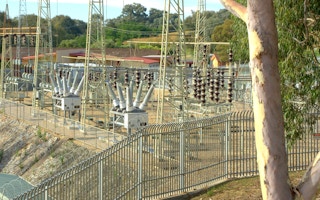Australia posted its biggest annual reduction in greenhouse gas emissions in 24 years of records in 2013 as the carbon tax helped drive a large drop in pollution from the electricity sector.
The latest greenhouse gas inventory, released online without fanfare by the federal government, showed annual emissions excluding changes in land use were estimated at 538.4 million tonnes of carbon-dioxide equivalent in 2013, down 0.8 per cent on the previous year.
While the final figures may be revised, the annual drop is likely to exceed the only two other years of emissions falls – in 2009 and 2010 – since the tally began in 1990.
The electricity sector reported emissions fell 5 per cent last year, with all but one other sector showing an increase. The carbon tax has its most direct impact on power generators, which account for about one-third of Australia’s emissions outside changes to forest cover.
“
The price on pollution is working and it is time Prime Minister Tony Abbott and Environment Minister Greg Hunt stopped lying to Australia and the world
Greens leader Christine Milne
The carbon price, now at $24.15 a tonne, will rise to $25.40 a tonne from next month and will apply until its likely scrapping when the new Senate votes on the Abbott government’s repeal bills, expected soon after July 1.
The government’s climate policies have been in the spotlight as Prime Minister Tony Abbott headed to Washington this week, soon after President Barack Obama introduced the most ambitious emissions cuts in US history – forcing power plants to slash 2005-level emissions 30 per cent by 2030.
Mr Abbott, forced to defend the government’s alternative policy to a carbon tax based on paying polluters to curb emissions, said he would avoid climate action that would “clobber the economy”.
But Greens leader Christine Milne said: “The price on pollution is working and it is time Prime Minister Tony Abbott and Environment Minister Greg Hunt stopped lying to Australia and the world.
“The government is trying to hide the fact that the price on pollution is the cheapest and most effective way to do something about global warming, and mitigate the future extreme storms, droughts and floods that will ravage Australia over the coming decades.”
A spokesman for Mr Hunt said national emissions had fallen only 0.1 per cent in the first full year of the carbon tax, showing that the price “does not work”.
“Comparing years with and without the carbon tax, we see a negligible difference in emissions,” he said. “We’re implementing a policy that will actually work.”
Electricity emissions
Since the start of the carbon tax in July 2012, total carbon emissions from the National Electricity Market – which serves eastern Australia – have fallen 17.2 million tonnes, or about 11 per cent, according to Hugh Saddler of energy consultancy Pitt & Sherry.
Slumping electricity demand, in part because of closures of aluminium smelters and other manufacturing, has contributed to the emissions drop.
The carbon price, though, has also discouraged some energy use while spurring more production from low-carbon energy sources, particularly wind and hydro.
However rising gas prices will prompt a switch to coal-fired power plants in coming months, suggesting emissions falls from the power sector are likely to taper off even if demand extends its slump, Dr Saddler said.
“I don’t think it will continue,” Dr Saddler said. “It’s as good as it gets.”
John Connor, chief executive of the Climate Institute, said the drop in 2013 emissions indicated existing policies were doing the intended job.
“We have a stable, set-and-forget default mechanism, that’s going to work,” Mr Connor said.
By contrast, the government was “ripping away” at other policies curbing emissions, with plans to scrap the Australian Renewable Energy Agency, the Clean Energy Finance Corp, and energy efficiency programs.
Any weakening of the Renewable Energy Target, now under review by a government-appointed panel led by climate change doubter Dick Warburton, would also undermine emissions reduction efforts, Mr Connor said. On current settings, the mandatory clean energy goal will cut emissions by another 70 million tonnes by 2020, he said.
Research released this week by RepuTex, a markets consultancy, estimated the government’s main climate policy – the Emissions Reduction Fund – may only meet a third of the emissions reduction challenge if Australia is to cut 2000 levels by 5 per cent by 2020.
Even if the government spends most of the $2.55 billion earmarked for the ERF by 2020 – with only $1.147 billion set aside in the budget for the coming four years – the fund will likely only achieve about 30-120 million tonnes of carbon abatement by the end of the decade, RepuTex estimated.
Mr Hunt has said Australia will easily meet the 5 per cent reduction goal, and was reported by News Corp on Friday saying the rural sector may account for as much as $1.9 billion, or about three-quarters, of the ERF, mostly through the carbon farming scheme.










